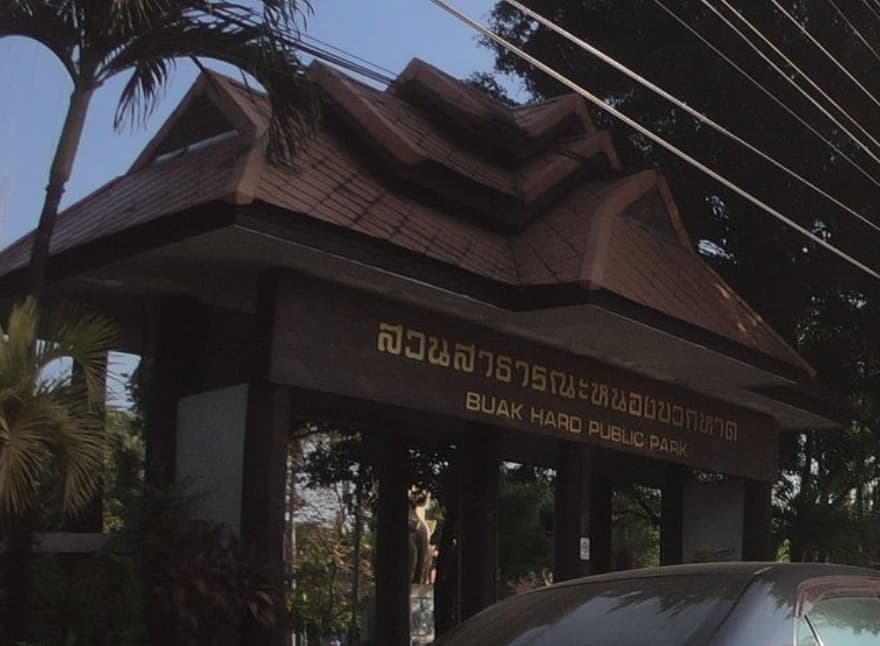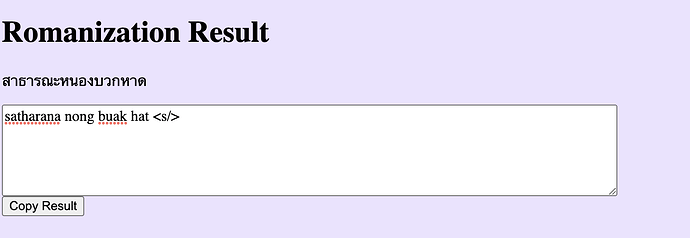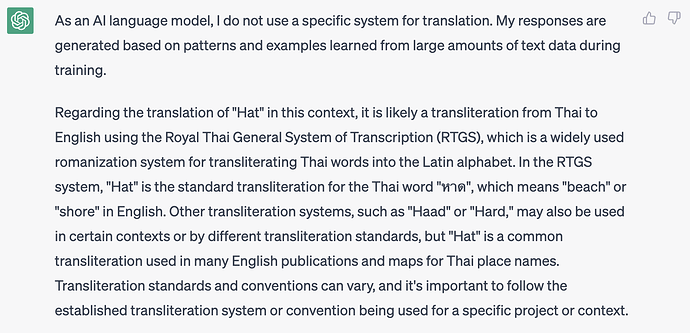After encountering a name change of a well-known public park in downtown Chiang Mai, I became curious.
The English and Thai names on OpenStreetMap are listed as “Buak Had Park” and “Nong Buak Haad Park” respectively, with the Thai name shown as “สวนบวกหาด”.
However, upon further investigation using Mapillary, the main park entrance displays the name as “สวนสาธารณะหนองบวกหาด” and “Buak Hard Public Park” in English.
Considering that “หาด” is often translated as “Haad” in Thailand, and other map providers show the park as “Nong Buak Haad Public Park”, there are several options for the English name to be used in the “name:en” field:
- A) The original main entrance sign English name
"Buak Hard Public Park" - B) The above option with the “Haad” variation:
"Buak Haad Public Park" - C) The translation of the main entrance Thai name
"Nong Buak Hard Public Park"(google translate) - D) The above option with the “Haad” variation:
"Nong Buak Haad Public Park"
As it is not uncommon to have multiple signs with mismatching English names, option C) would be a reasonable choice. What do you think?



